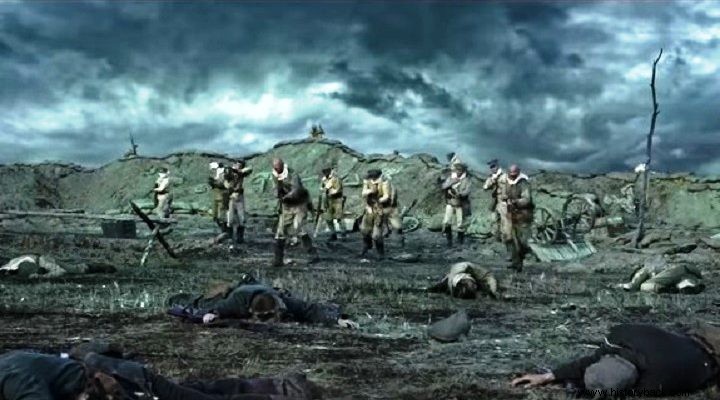
Osowiec Fortress is located in north-eastern Poland. It was built in the period 1882-92 with the aim of covering the then Russian Poland from a German attack from East Prussia. It was built on the Biebrza River, north of Bialystok, 50 km from the border.
The fort was covered by the marshes around the river and could not be bypassed. The fortress also controlled the Vyalistok – Königsberg railway line. With the start of the First World War, the fortress became a main part of the Russian defense in the region. After the disastrous battle for the Russians in Tanneberg, the Germans also moved against the fortress, in September 1914.
The Germans attacked with army corps strength (40 infantry battalions) reinforced by heavy artillery – at least 60 heavy heavy guns. Until September 21, the German infantry was pressing hard on the outnumbered Russians, gaining space for the deployment of their artillery.
The German heavy guns went into action from 26 September. After two days of intensive bombardment, on September 28, the German infantry broke through. However the Russians fought furiously and repulsed the attack. At the same time, by counterattacking, the Russians gained critical ground, forcing the Germans to redeploy their heavy guns to the point where they could not hit the fort.
New German attack
On February 3, 1915, the Germans attacked again. It took five days of fierce fighting to capture the first Russian line of defense. The Russians retreated to their second line of trenches where they repulsed all German attacks. The Germans took advantage of their territorial gains to once again move heavy artillery into positions from where it could hit the fortress.
A total of 360 German guns of caliber 100-420mm. they started shelling the Russian positions. Within a week the German guns had fired 250,000 shells against the nevertheless indomitable Russians, while the lighter guns had fired nearly 1,000,000 shells.
The Russian high command, considering the capture of the fortress certain, asked the garrison to hold, if possible, another 48 hours to evacuate civilians. But the fortress did not fall despite the attacks and bombings.
The attack of the dead
So summer came with the Germans always pinned down before the fortress. On August 6, 1915, the Germans launched a new powerful attack with 14 infantry battalions, one engineer battalion and 30 artillery pieces, and for the first time, chemical gases.
At that time the fortress was defended by only 900 Russians – 500 men of the 226th Infantry Regiment and 400 men of the national guard. After the gasses were first released, against which the Russians had no defense, 7,000 German soldiers rushed in.
In the first Russian line of trenches, however, they came face to face with the men of the 13th Company of the 226th Regiment. The Russians, spitting blood from their gas-burnt lungs, practically dead, sprang like ghosts out of the trenches and fought back with whatever life they had left. About 60 Russian soldiers, under Lieutenant Vladimir Kotlinsky, put thousands of Germans to flight.
However, the brave second lieutenant did not survive the battle. The Germans fled in panic. It was the last victory of the Russians. On August 18, it was decided to evacuate the fortress because the Russian forces on either side of it had been defeated and the fortress was in danger of being encircled.
Sergei Khmelkov who survived the attack reported:“Every living thing outside the fortifications had died… the grass turned black, the flowers died and the food was poisoned”…

